Warning Signs
- 1/45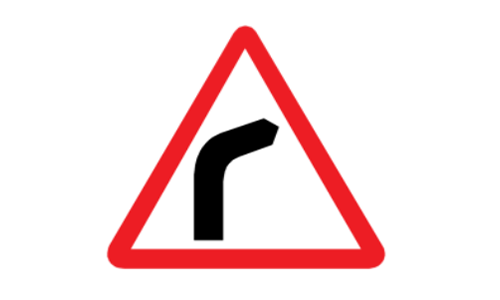
The recommended actions are to reduce speed for safe navigation, stay in the left lane, and be ready to steer to follow the curve of the road to the right.
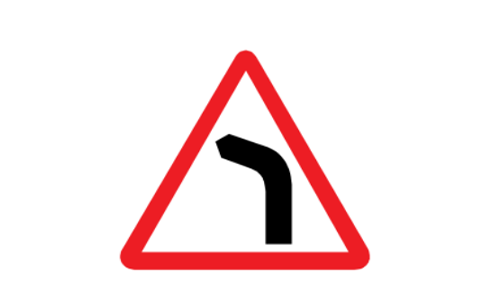
Drivers should reduce their speed, stay in the left lane, and be prepared to steer to follow the curve of the road to the left safely.

This warning sign alerts drivers to the presence of multiple curves in the road ahead, with the first bend being to the right. The recommended action is to keep to the left and refrain from overtaking, making U-turns, or parking.
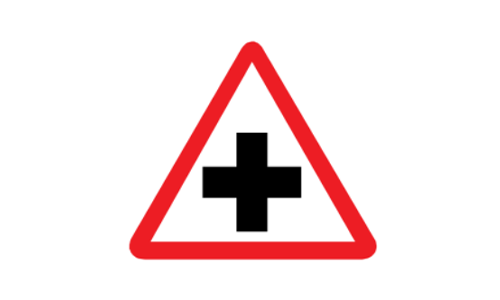
This sign warns drivers of a cross junction ahead, indicating that vehicles may be approaching and crossing from different directions. Drivers should slow down and be prepared to yield as necessary.
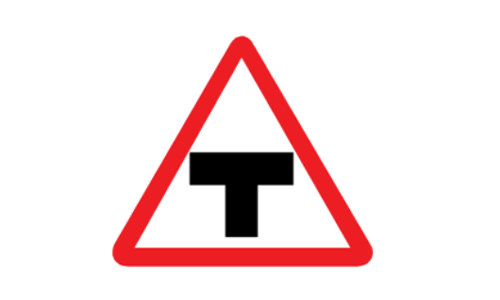
This sign warns of a T junction ahead, where your road will intersect with another. The instruction is to slow down and be prepared to give way to vehicles coming from both the right and the left on the intersecting road.
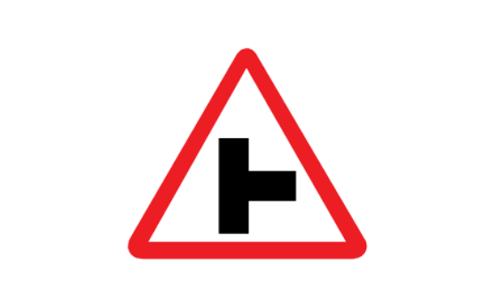
This sign warns drivers that a side road is joining from the right ahead, and vehicles may be entering the main road from that side. Drivers should slow down and be aware of potential traffic merging from the right.

This warning sign is placed ahead of a side road joining from the left, alerting drivers to the risk of vehicles entering the main road from that direction.
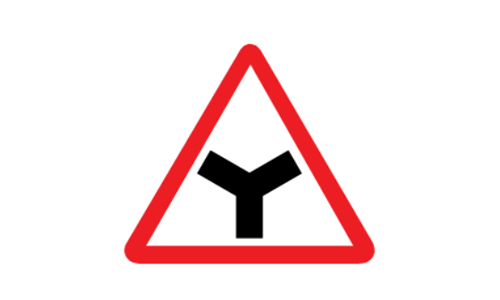
The Y junction sign warns drivers that they are approaching an intersection where traffic will merge into their road from both the right and the left at an angle, requiring them to be aware of vehicles approaching from these directions.
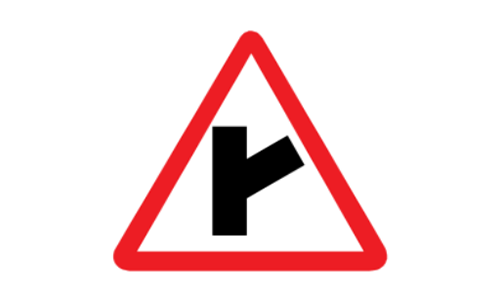
This Y junction sign, with the arms angled right, specifically cautions drivers about the possibility of vehicles merging into their lane from a road joining from their right at an angle.
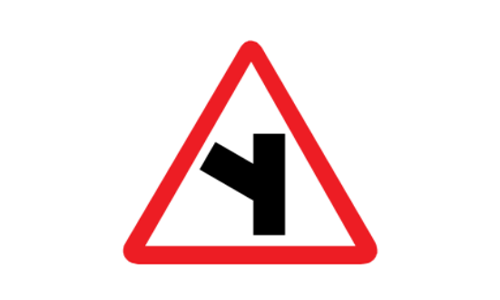
This Y junction sign specifically indicates that traffic will be merging into your road from the left at an angle, requiring you to be aware and potentially yield.

This merging traffic sign explicitly warns drivers that vehicles may be joining their lane from a road entering from the left, requiring them to be cautious and prepared to adjust their speed or position.
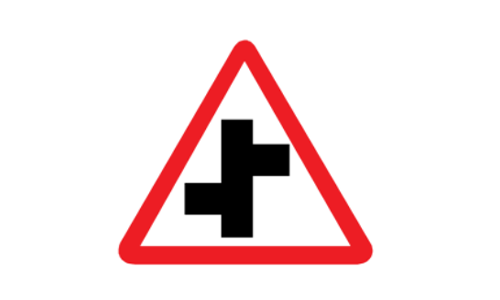
The staggered junction sign warns drivers that the intersecting roads are not directly opposite each other, meaning they will need to be aware of and potentially yield to traffic from both the right and the left at slightly different points within the junction.

This sign indicates a transition to two-way traffic on a road that might currently be one-way. Drivers should slow down, keep to the left, and be vigilant for oncoming vehicles.
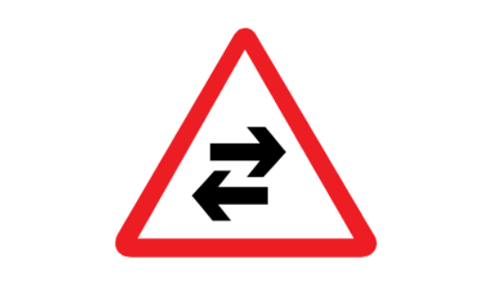
This sign warns drivers that they are approaching an intersection where two-way traffic will be crossing a one-way road. They should slow down and be prepared for vehicles approaching from both their right and their left.
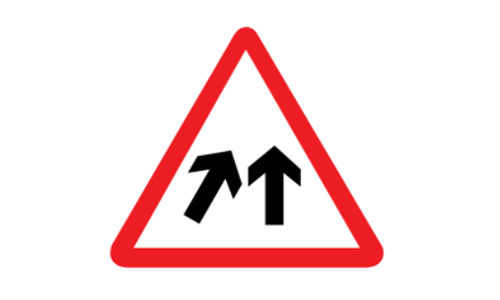
This sign indicates that lanes of traffic will be merging ahead, potentially from the right or the left. Drivers should slow down and be prepared to adjust their position and speed to allow for safe merging.

This sign warns drivers that the road will become narrower on the left. It’s crucial to reduce speed and be aware of the reduced lateral space on the left side of the vehicle. The text also advises against overtaking, U-turns, and parking in this area.

This sign warns that the road will become narrower on the right. Drivers should reduce speed and be mindful of the reduced space on the right side of their vehicle. Overtaking, U-turns, and parking are also discouraged.

This sign warns that the road will become narrower from both edges, reducing the overall width of the carriageway. Drivers should slow down and be prepared for less maneuvering space.

This sign indicates the end of a dual-carriageway, leading to a single carriageway with two-way traffic. Reducing speed and being aware of oncoming vehicles is crucial.

This sign warns of an upcoming roundabout. In Singapore, drivers must yield to traffic already circulating on their right.
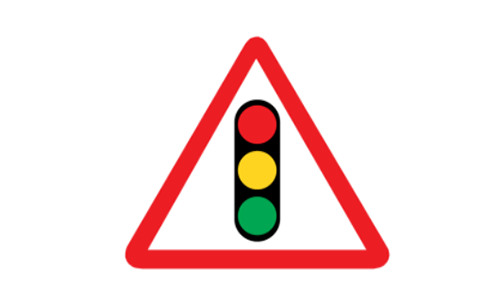
This sign provides advance warning of traffic signals. Drivers should reduce speed and be ready to stop if the lights change to amber or red.
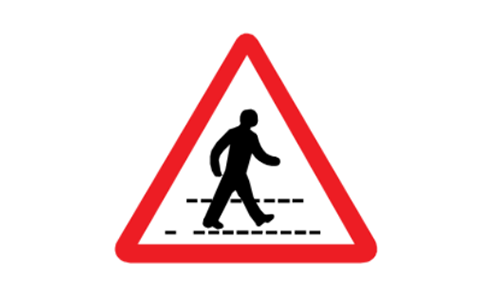
This sign alerts drivers to an upcoming pedestrian crossing, emphasizing the need to slow down and stop if pedestrians are present or intend to cross at the marked location.
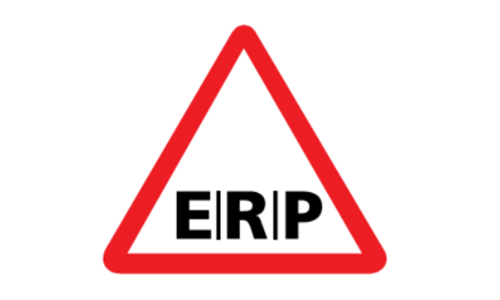
The ERP sign warns of an approaching Electronic Road Pricing zone, where a toll or road user charge is likely to be levied during restricted hours.
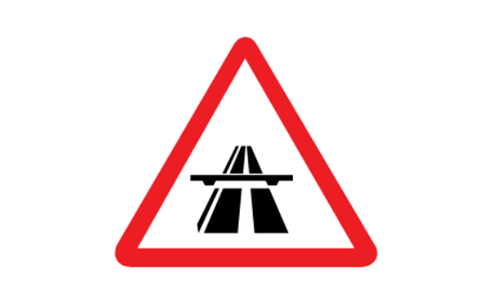
This sign warns drivers that the approaching expressway may have restrictions on the types of vehicles allowed to use it. Drivers of certain vehicles should be prepared to take an alternative route.
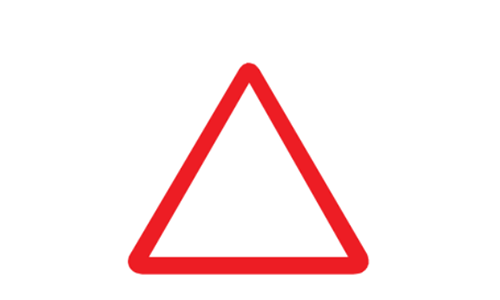
This sign indicates a Vehicle breakdown. It should be placed at least 20 metres from the rear of the vehicle. It is required when your vehicle is immobile due to a breakdown and poses a potential hazard to other road users.
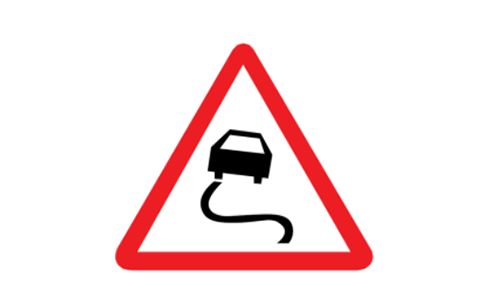
This sign warns of a slippery road surface ahead. Drivers should slow down and handle their vehicle gently, avoiding sudden braking, acceleration, or steering that could lead to a loss of control.
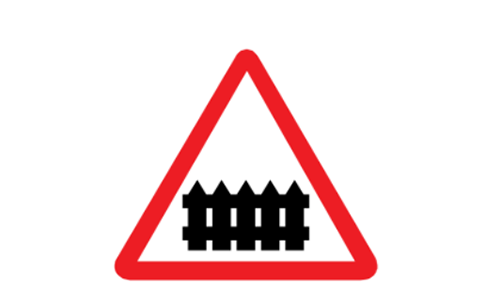
This sign warns drivers of an upcoming gated railway level crossing. The primary concern is that the gates may be in the process of closing or already closed due to an approaching train, requiring drivers to stop and wait.

This sign warns drivers of an upcoming ungated railway level crossing, meaning there are no barriers to stop traffic. Drivers must be extremely cautious, slow down, and be prepared to stop if a train is approaching.
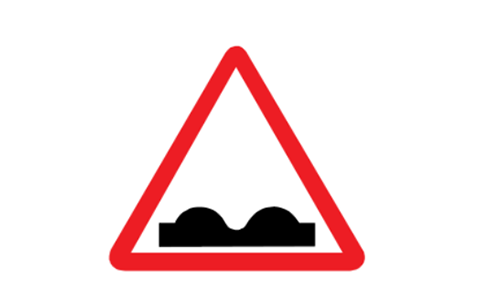
This sign warns drivers that the road ahead has an uneven surface. Slowing down is recommended to maintain control of the vehicle and prevent damage. Overtaking is also advised against.
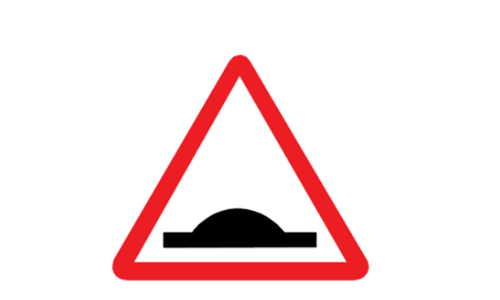
This sign warns drivers of an upcoming road hump or speed bump. They should slow down to safely navigate over the raised section and avoid damage to their vehicle. Overtaking is also typically prohibited in such areas.
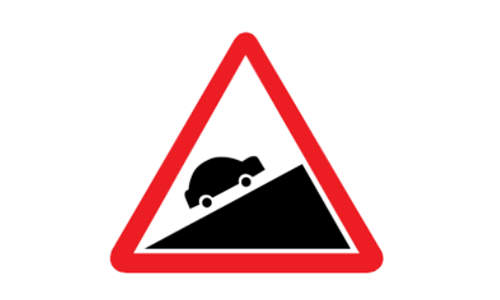
This sign warns of a steep uphill gradient. Drivers should stay on the left (in Singapore) and shift to a lower gear to provide the engine with more power to ascend the slope safely. Overtaking, U-turns, and parking are also discouraged.

This sign warns of a steep downhill gradient. Drivers should stay on the left and use a lower gear to help control the vehicle’s speed and prevent excessive reliance on the brakes, which could overheat. Overtaking, U-turns, and parking are also advised against.
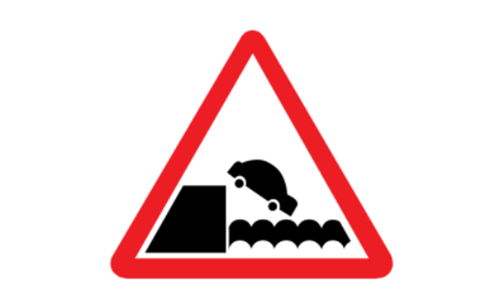
This sign warns drivers that the road ahead terminates at a quay, river bank, or sea. They should slow down significantly and be extremely cautious as there is a risk of driving directly into the water if they are not careful.

This sign warns drivers that there may be animals, such as livestock or wild animals, in the vicinity of the road. They should slow down and be prepared to stop or take evasive action to avoid collisions.
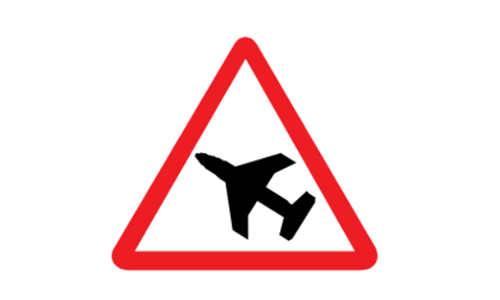
This sign warns drivers that they are near an area where aircraft may be flying at low altitudes, such as near an airport. Drivers should be prepared for sudden and potentially startling noise from these aircraft.
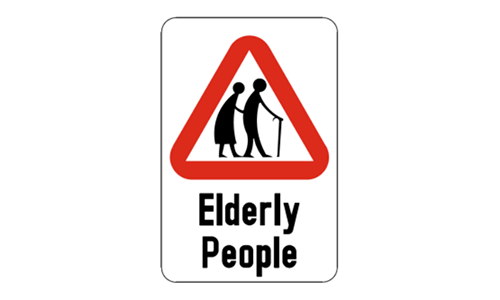
This sign advises drivers to reduce their speed and exercise caution because elderly individuals might be crossing the road. These pedestrians may move more slowly and require more time to cross safely.
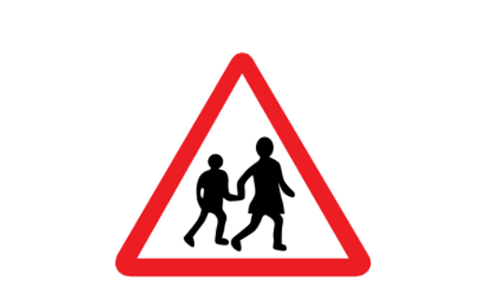
This sign warns drivers that they are entering an area where children are likely to be present, such as near a school or playground. Drivers should slow down and be particularly vigilant as children may be less predictable in their movements and could be crossing the road.

The sign indicates both a pedestrian crossing and a raised road surface. This design emphasizes pedestrian priority. Drivers should reduce their speed to safely navigate the raised section and be prepared to stop to allow pedestrians to cross without hindrance.

This sign alerts drivers to the presence of a location ahead where U-turns are permitted and likely to occur. Drivers should pay attention to other vehicles’ movements and be prepared to adjust their speed or position if necessary.

This sign serves as a warning to drivers to be aware that vehicles traveling towards them might be preparing to make a U-turn. Drivers should be vigilant and ready to react to any changes in the opposite traffic’s movement.

These signs indicate the beginning of a school zone. The primary instruction is to exercise caution and be aware of children who might be walking, running, or crossing the road. Reducing speed allows for better reaction time in potentially unpredictable situations involving children.

The sign explicitly states that the 40 km/h speed limit applies when lights flash alternately. This indicates a temporary speed restriction in effect when the warning lights are active.

This warning sign indicates the potential presence of pedestrians, including a child, in the roadway ahead. Drivers should reduce their speed and be vigilant for people crossing.
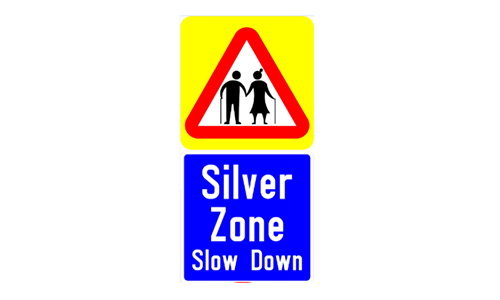
The Silver Zone Slow Down sign, coupled with the warning about elderly pedestrians, instructs drivers to reduce their speed and exercise a heightened level of caution. The focus is on the vulnerability of this pedestrian group and the need for drivers to be prepared to react safely to their presence.
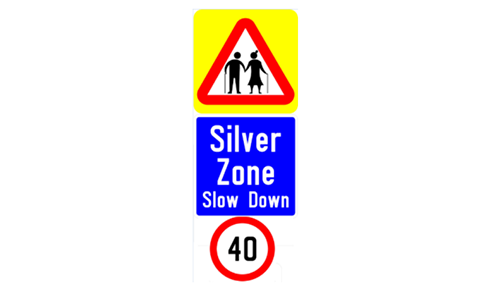
The combination of the Silver Zone Slow Down sign and the 40 km/h speed limit sign clearly indicates that drivers should reduce their speed and not travel above 40 km/h while being particularly vigilant for elderly pedestrians.
 Pass the Exam easily with Premium Practice Tests | Unlock All with 7 Days Plan
Pass the Exam easily with Premium Practice Tests | Unlock All with 7 Days Plan  Offer Ends in
Offer Ends in 
